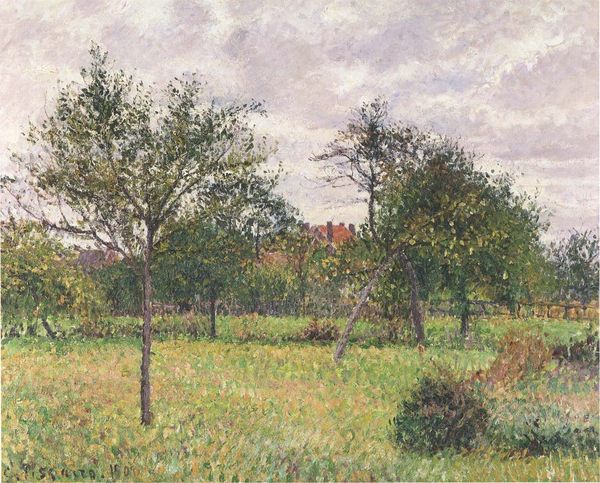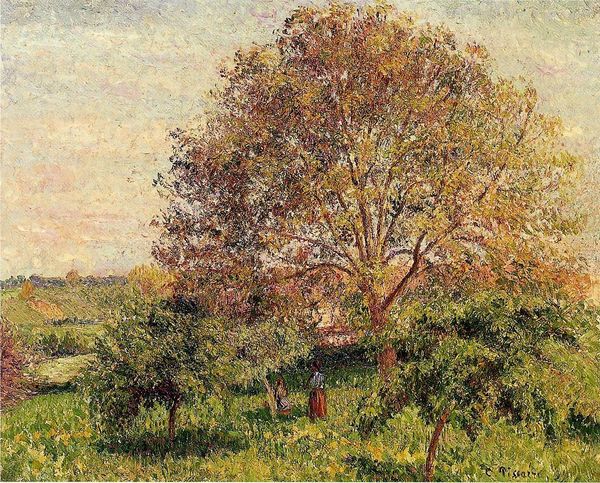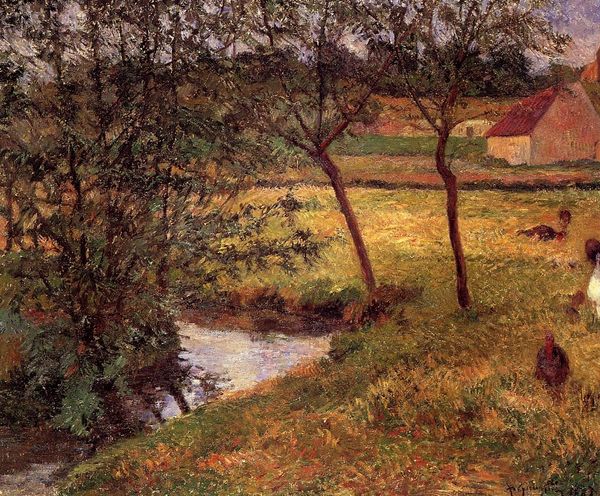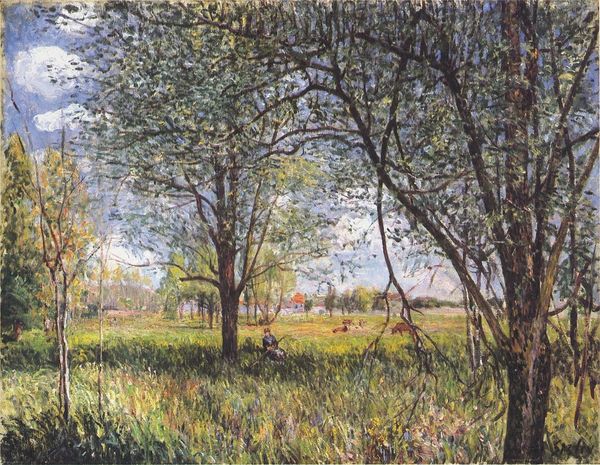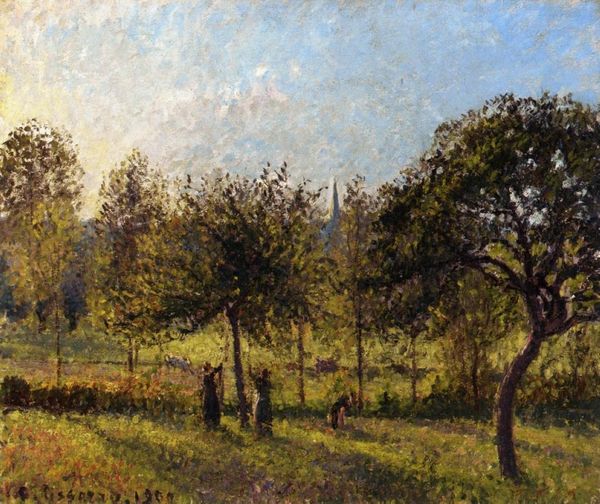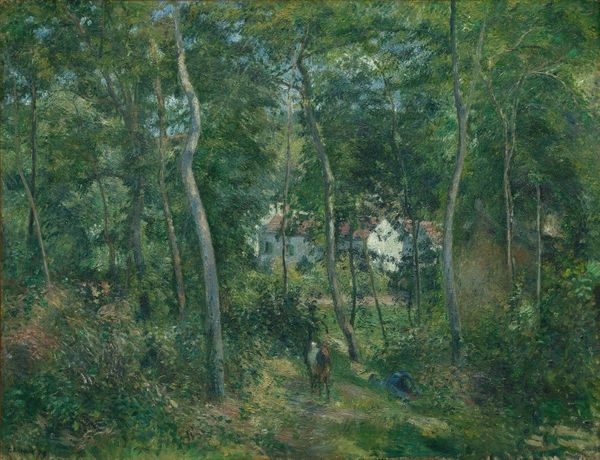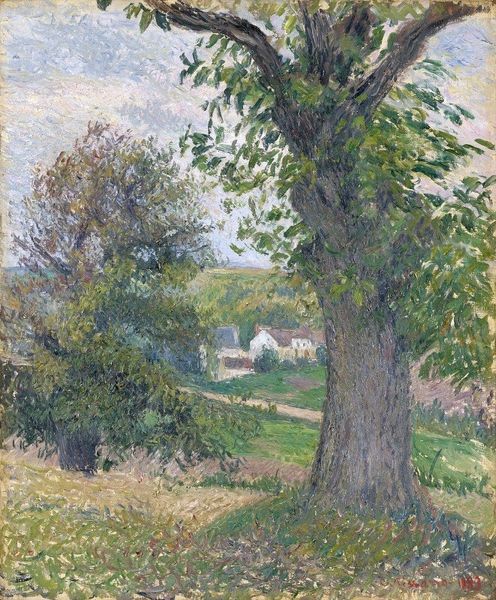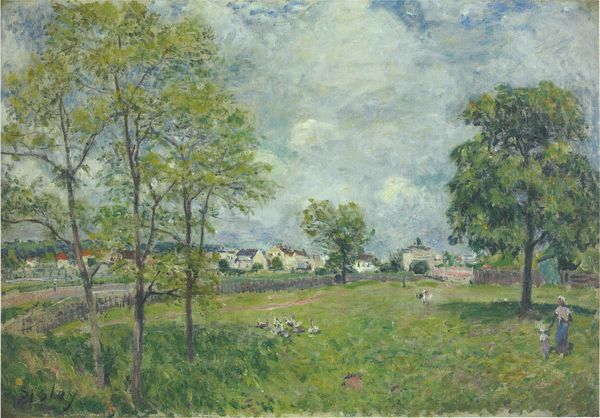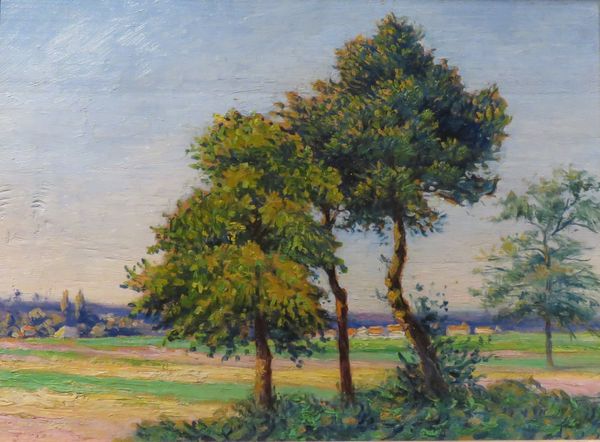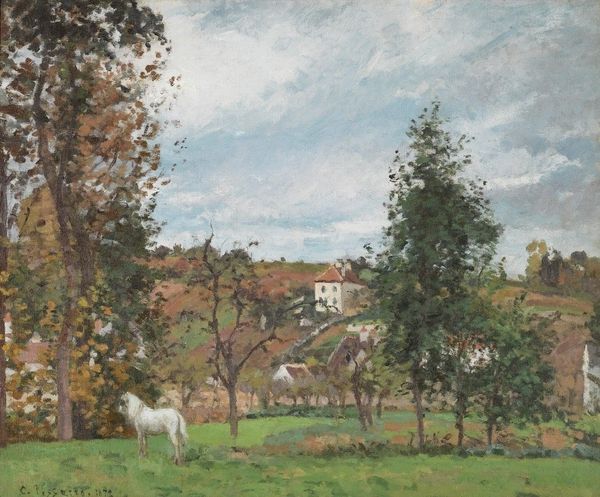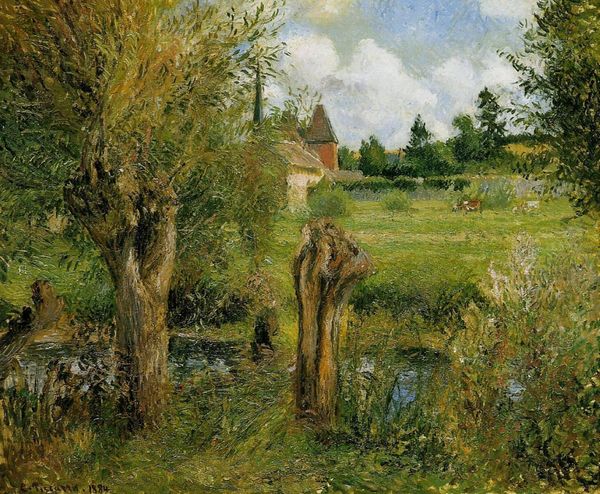
painting, plein-air, oil-paint
#
painting
#
impressionism
#
plein-air
#
oil-paint
#
landscape
#
figuration
Copyright: Public domain
Curator: I’m struck immediately by the vibrant textures in this painting, especially the grass in the foreground—it’s alive with energetic brushstrokes. Editor: Indeed. We’re looking at Camille Pissarro’s "Apple Tree at Eragny," painted in 1884. This landscape encapsulates a period of significant transition for Pissarro. He was deeply involved in Impressionism but also exploring new scientific approaches to painting. Curator: The composition seems to divide the canvas rather sharply. The rough grass in the lower foreground then the middle ground is completely dominated by the massive, almost monumental apple tree that blocks most of the backdrop with the village houses. Editor: Absolutely. The application of paint reveals the heart of the Impressionist project and it is made of oil paint. He used distinct, visible brushstrokes that capture light and form, reflecting his plein-air technique, and the social structures embedded in landscape painting. Note that many contemporary French landscape artists celebrated rural life while implicitly reinforcing bourgeois ideals. Curator: I see what you mean. The idyllic setting and focus on natural beauty romanticize rural life, ignoring its tougher realities. Was Pissarro overtly commenting on that? Editor: It’s complex. Pissarro himself had radical social beliefs and was a strong supporter of workers and ordinary people, unlike many of his patrons. It is difficult to argue his intention was only in support of their well-being by producing artworks, for an environment only accessible by those with the economical possibilities to inhabit such places. This period also followed an intensely challenging period of rural depopulation as labor was stolen for metropolitan development. Yet the final paintings end up on bourgeois walls. Curator: This tension—his own convictions versus the destination of his art—creates a compelling dialogue about art’s role within socio-economic structures, right? It seems an honest exploration through material and context. Editor: Exactly. "Apple Tree at Eragny" represents much more than just a pretty landscape. It embodies a debate about how we view work, environment, and the complex forces at play within society. Curator: Considering that, looking at it again gives me a whole new perspective on its visual harmonies. Thank you.
Comments
No comments
Be the first to comment and join the conversation on the ultimate creative platform.
